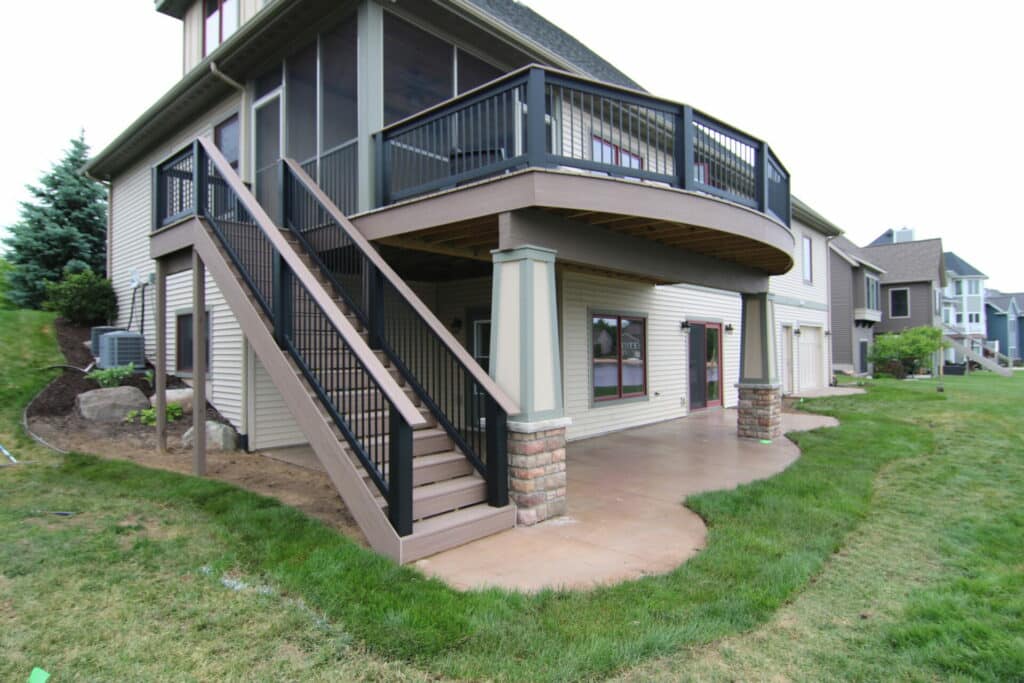Deck railings might seem minor when you see a deck, but they are important in a deck project’s overall function, appearance, and safety.
They provide a boundary to prevent falls, especially for children and pets. Railings also contribute to the aesthetic appeal of the deck, enhancing its overall look and design.
They offer support and stability, allowing individuals to lean against them comfortably and providing security while using the deck. Ultimately, deck railings are essential components that bring practical and aesthetic value to outdoor spaces. At Precision Decks & Patios, we’ll help you every step of the way.
Be sure to check out our outdoor living projects for ideas on improving your home.
Deck Railing Types
Exploring different deck railing types and the variety of materials will help you decide which is best for your home. Each type offers unique benefits, so let’s look at the options to help you make an informed decision that complements your home and lifestyle.
- Wood: Wood deck railings have a natural aesthetic and can be painted or stained to adapt to any style. They offer the warmth of natural materials and design flexibility, especially for custom deck projects. However, they need regular upkeep, like staining or sealing, to avoid rot, warping, and insect damage. Their durability depends on the type of wood.
- Vinyl/PVC: Vinyl railings are a synthetic material option available in various colors and styles, some resembling wood. They’re easy to maintain, resistant to decay, and don’t need painting or staining. However, extreme temperatures might cause them to become brittle and crack, and their color may fade in sunlight.
- Aluminum: Aluminum deck railings are both light and strong, which make them a popular choice. They are offered in many colors and finishes and are usually powder-coated for durability. They resist rust and corrosion, need little maintenance, and work well in different climates. However, they can become hot in the sun and are generally costlier than wood or vinyl.
- Steel: Steel deck railings are often coated to prevent rust and corrosion. They’re perfect for contemporary designs, provide strong structural support, and are available in various finishes. However, they can rust if the coating is damaged, are heavier than aluminum, and tend to be pricier.
- Glass: Glass railings use tempered safety glass, clear or tinted, to provide uninterrupted views and enhance light. They need frequent cleaning for clarity and are pricier, possibly unsuitable for windy conditions.
- Composite: Composite decking materials combine wood fibers and plastic to resemble wood. They resist rot, warping, and pests with low upkeep and are offered in many colors and textures. Initially more expensive, some composites may fade or stain over time.
- Cable: Stainless steel cable deck railings ensure minimal view obstruction and a modern appearance. While durable, cable railings require periodic tension adjustments. They are costlier than some options and might not fit all design needs.

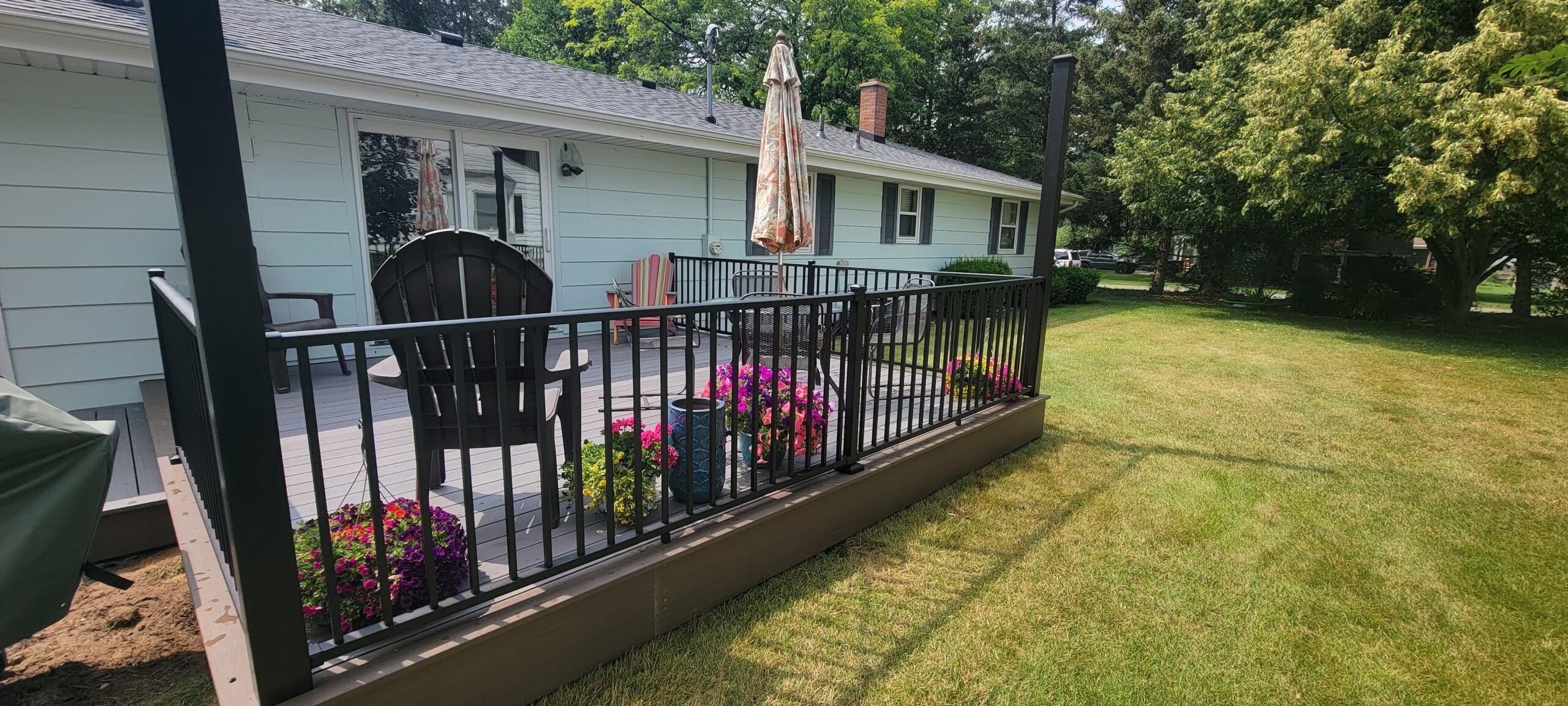
Each material has pros and cons, influenced by priorities like maintenance, aesthetic appeal, durability, and cost. Environmental factors such as sun, rain, and temperature extremes also play a critical role in the selection process, impacting the railing system’s longevity and performance. We can help you decide which material works best for your deck.
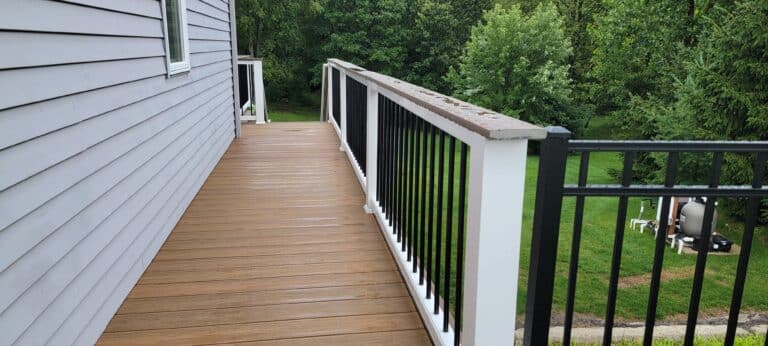
Deck Railing Ideas
Are you wondering about some deck railing design ideas? Check these out:
Contemporary Design Ideas
- Sleek Glass Panels: Frameless or minimally framed glass panels offer a clean, modern look, keeping spaces open and light-filled.
- Horizontal Metal Bars: Thin, horizontal metal bars or cables provide a minimalist aesthetic, suitable for contemporary or industrial-style homes. Stainless steel or powder-coated aluminum are popular choices.
- Mixed Materials: Combine glass with stainless steel or wood with aluminum for a modern, eclectic look. This approach allows for creative expression and can be tailored to any contemporary home design.
Combining Elements for Unique Styles
- Traditional with a Twist: Add modern elements to traditional designs, such as glass balusters with classic wood frames, to update the look while maintaining a traditional feel.
- Rustic Modern: Blend rustic materials like reclaimed wood with contemporary designs like horizontal lines or metal accents to create a warm yet modern aesthetic.
- Transitional Styles: For a home that straddles two styles, incorporate elements from both in your railing design. A simple metal frame with traditional wood posts or contemporary glass panels in a rustic wood frame can bridge the gap between styles.
Design Considerations for Deck Railings
Designing deck railings involves balancing aesthetic appeal with functionality and safety, which is paramount. A well-chosen design enhances your home’s look and ensures its occupants’ well-being and comfort. Below are key factors to consider:
Aesthetic Preferences
- The railing should match your home’s architectural style, whether modern, traditional, rustic, or contemporary.
- The choice between preserving a view with transparent options like glass and cable or opting for privacy with other materials.
- Selecting railings with colors and textures that complement or contrast your home and deck enhances overall attractiveness.
Safety Standards
- To prevent accidents, local building codes usually set minimum railing height requirements (typically 36 to 42 inches) based on the deck’s height.
- Baluster spacing is crucial to stop small children from slipping through, generally kept under 4 inches.
- Railings must handle a specific amount of force, both vertically and horizontally, as per local codes, supporting people without giving way.
Durability and Maintenance
- The railing’s longevity and upkeep depend on its material, with composites and metals outlasting and requiring less maintenance than wood.
- Material selection should also consider the climate and resistance to elements like moisture, extreme temperatures, and sun exposure.
Compatibility with Deck Design
- Railings should seamlessly integrate with deck features like stairs and benches for both looks and functionality.
- Adding lighting to railings can improve safety and create a pleasant atmosphere, with options like post lights and under-rail lights.
Regulatory Compliance
- Adhering to local building codes ensures your railing’s safety and structural integrity, affecting various aspects from height and spacing to material strength.
- Large projects might need permits, requiring plan submissions that adhere to local regulations.
Addressing these considerations guarantees that your deck railing will be beautiful and secure. Consulting professionals and reviewing local building codes are smart steps to ensure that your project meets all necessary standards.
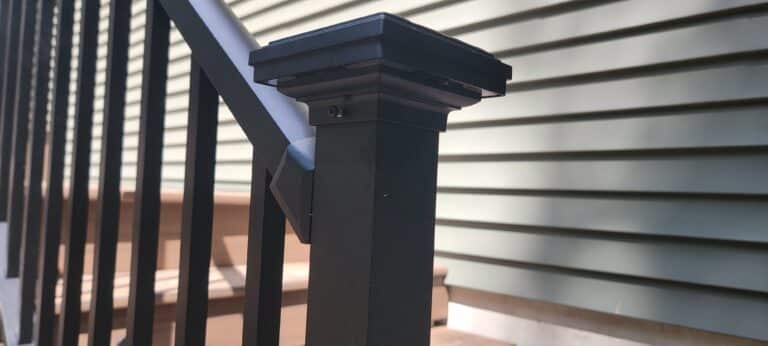
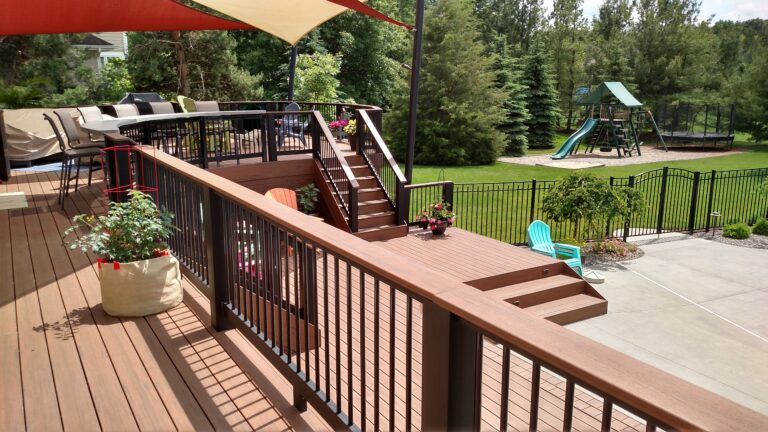
Which Deck railing is Right for You?
As you prepare for your custom deck and decide on deck railing, the experts at Precision Decks & Patios can help you choose the best option for your outdoor living space. Contact us today for a free design consultation.
Deck Railing FAQs
Deck railings prevent falls, making them an essential safety element, particularly for decks above ground level. They must conform to the local building regulations concerning height and baluster spacing.
Absolutely. Railings offer flexibility in materials, styles, and colors, allowing for a perfect match with the deck and house’s aesthetic. They can also be tailored to meet specific functional or visual preferences.
Key considerations include your home’s architecture, the desired view from your deck, how much maintenance you’re willing to undertake, safety standards, and your budget. Your chosen railing should enhance your deck’s appearance and adhere to building standards.
We understand that your outdoor project isn’t just an addition to your property but a new way for you and your family to enjoy your home. Let us craft your custom deck with railings and othe features. Get your free design consultation today.

